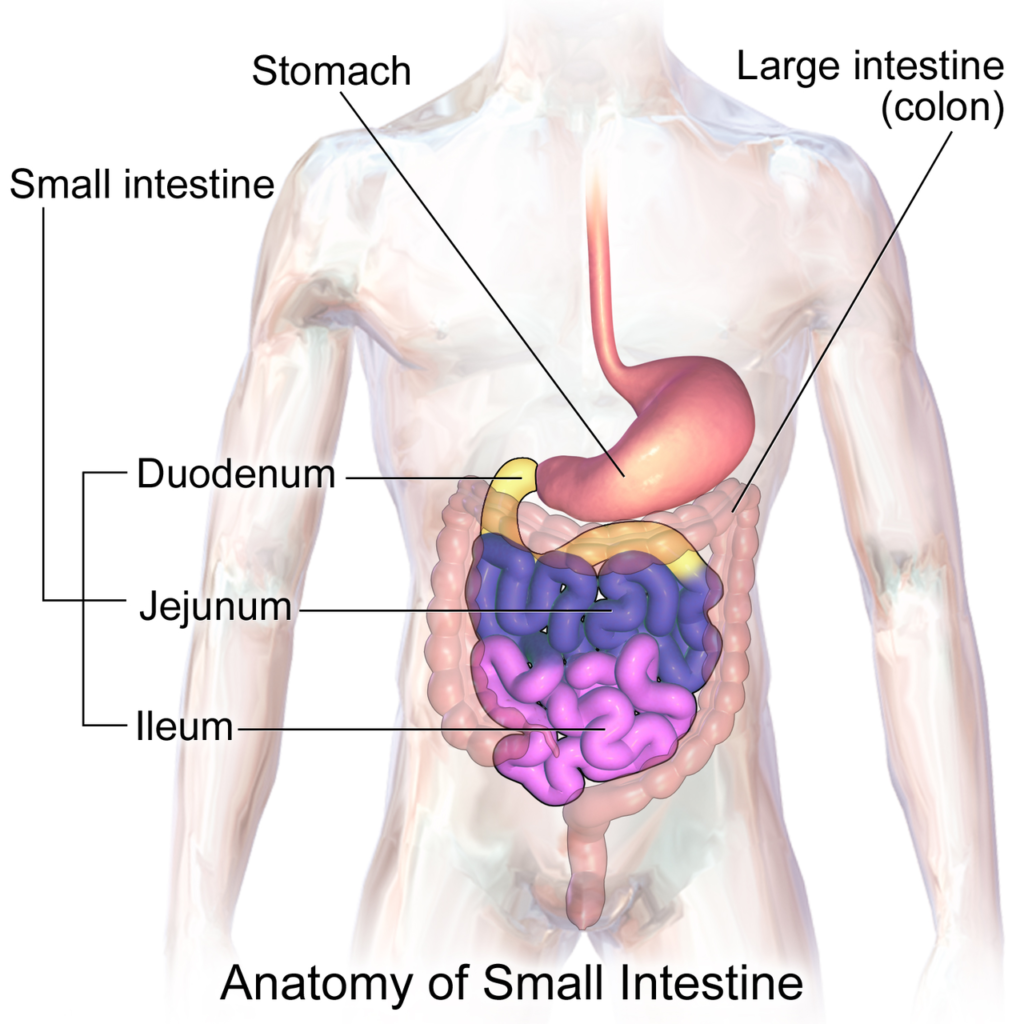
The small intestine is a long, narrow, tube-like organ that is part of the gastrointestinal tract. It follows the stomach and connects to the large intestine. The primary function of the small intestine is the digestion and absorption of nutrients from the food we eat. Structure of the Small Intestine: The small intestine is divided into three parts: the duodenum, the jejunum, and the ileum. The duodenum is the first segment and receives partially digested food from the stomach through the pyloric sphincter. The jejunum and ileum follow the duodenum and make up the majority of the small intestine.
The walls of the small intestine have specialized structures that increase the surface area for efficient absorption. These structures include villi, which are finger-like projections, and microvilli, which are even smaller projections on the surface of the villi. The villi and microvilli greatly increase the available surface area for nutrient absorption.
Functions of small intestine
1. Digestion:
The small intestine continues the digestion process initiated in the stomach. It receives secretions from the pancreas and liver to aid in digestion. The pancreas releases digestive enzymes, including trypsin, chymotrypsin, and lipases, which break down proteins, carbohydrates, and fats. The liver produces bile, stored in the gallbladder and released into the small intestine to aid in fat digestion.
2.Nutrient Absorption:
The small intestine’s inner lining contains specialized cells called enterocytes responsible for absorbing nutrients. The breakdown products of carbohydrates, proteins, fats, vitamins, minerals, and water are absorbed through the intestinal wall into the bloodstream. The villi and microvilli greatly enhance the surface area available for absorption, ensuring efficient nutrient uptake.
3. Absorption of Water and Electrolytes:
In addition to nutrients, the small intestine absorbs water and electrolytes, such as sodium, potassium, and chloride, from the digested food.
4.Secretion:
The small intestine secretes enzymes and mucus to aid digestion and protect its lining. Mucus helps lubricate the passage of food and protects the intestinal wall from digestive enzymes and stomach acid. The small intestine plays a crucial role in the digestion and absorption of nutrients, contributing to the overall nourishment of the body.

